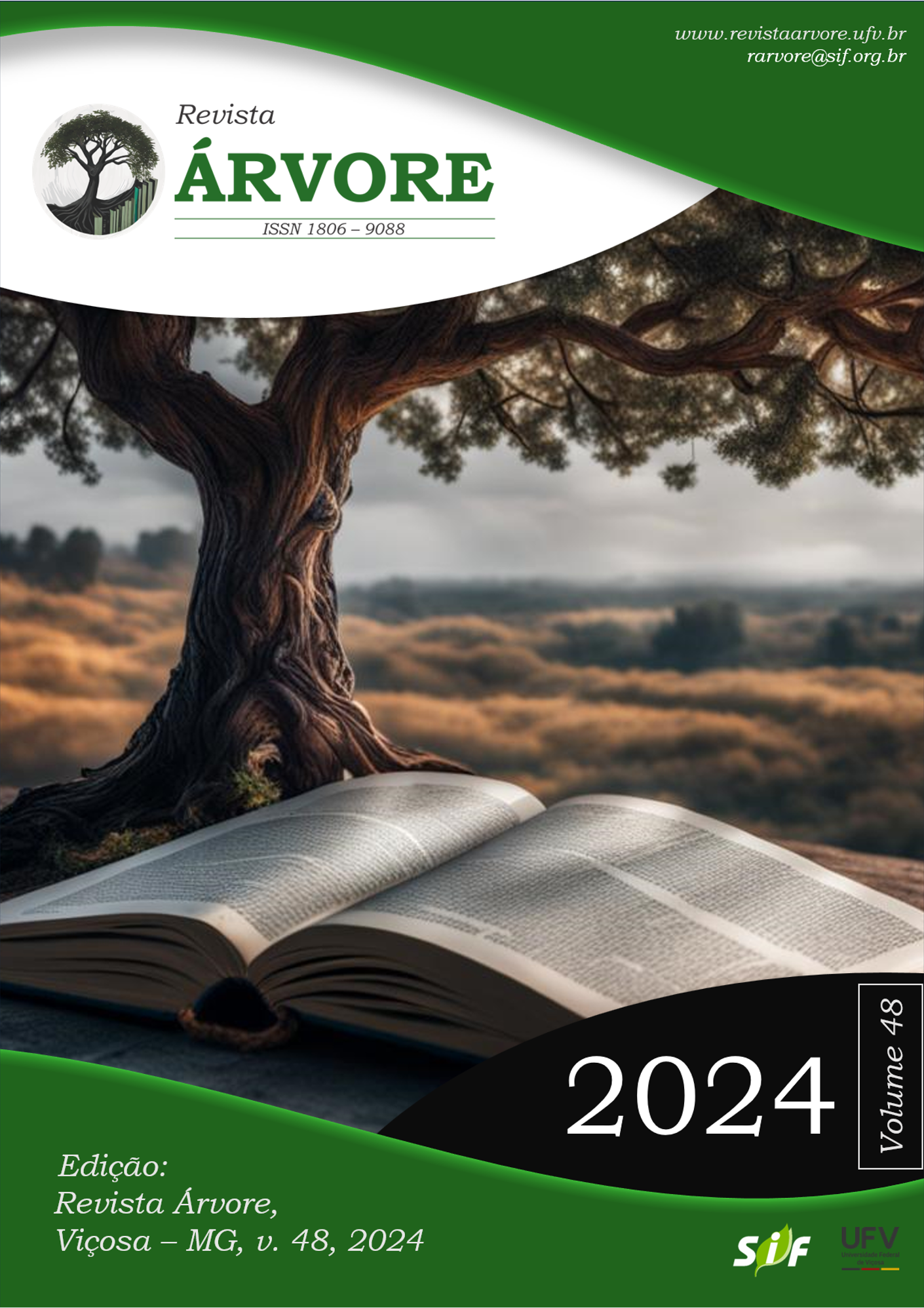A methodology to estimate the volume and stem taper based on solids of revolutions
DOI:
https://doi.org/10.53661/1806-908820244826370105Keywords:
Geometric forms, Eucalyptus trees, Taper functionsAbstract
The knowledge and identification of stem forms allow more accurate quantification of timber resources as the volume and knowledge of aspects related to species genetics and environmental factors on tree growth. Therefore, the objective of this study was the development of methodology based on concepts of solids of revolution to identify the different forms along the tree stems; define the most appropriate formulas to compute the volume of each part of the stem; and estimate diameters along the stems (stem taper). For this, data from 27 felled sample trees of Eucalyptus grandis, separated equally into nine diameter classes, with 60 months of age, planted under 3 × 3 meters spacing were used to establish the relationships between the variables and develop the methodology. For the set of sample trees, the basal part of the stems resembled a neiloid, a cone at the center, and a paraboloid at the top. The differences between stem volumes obtained by applying specific formulas for each stem section and those obtained by a single formula for all sections were statistically significant (p-value < 0.05). The proposed methodology provided accurate estimates of diameters outside the bark compared to the diameters estimated by the taper models for most sample trees, showing the potential of using the methodology as an alternative to traditional methods.
Keywords: Geometric forms, Eucalyptus trees, taper functions
Downloads
Published
How to Cite
Issue
Section
License
All authors agreed to submit the work to Revista Árvore and granted the exclusive license to publish the article. The authors affirm that it is an original work and has not been previously published elsewhere. The scientific content and opinions expressed in the article are the sole responsibility of the authors and reflect their opinions, not necessarily representing the opinions of the editorial board of Revista Árvore or of the Society of Forest Investigations (SIF).








